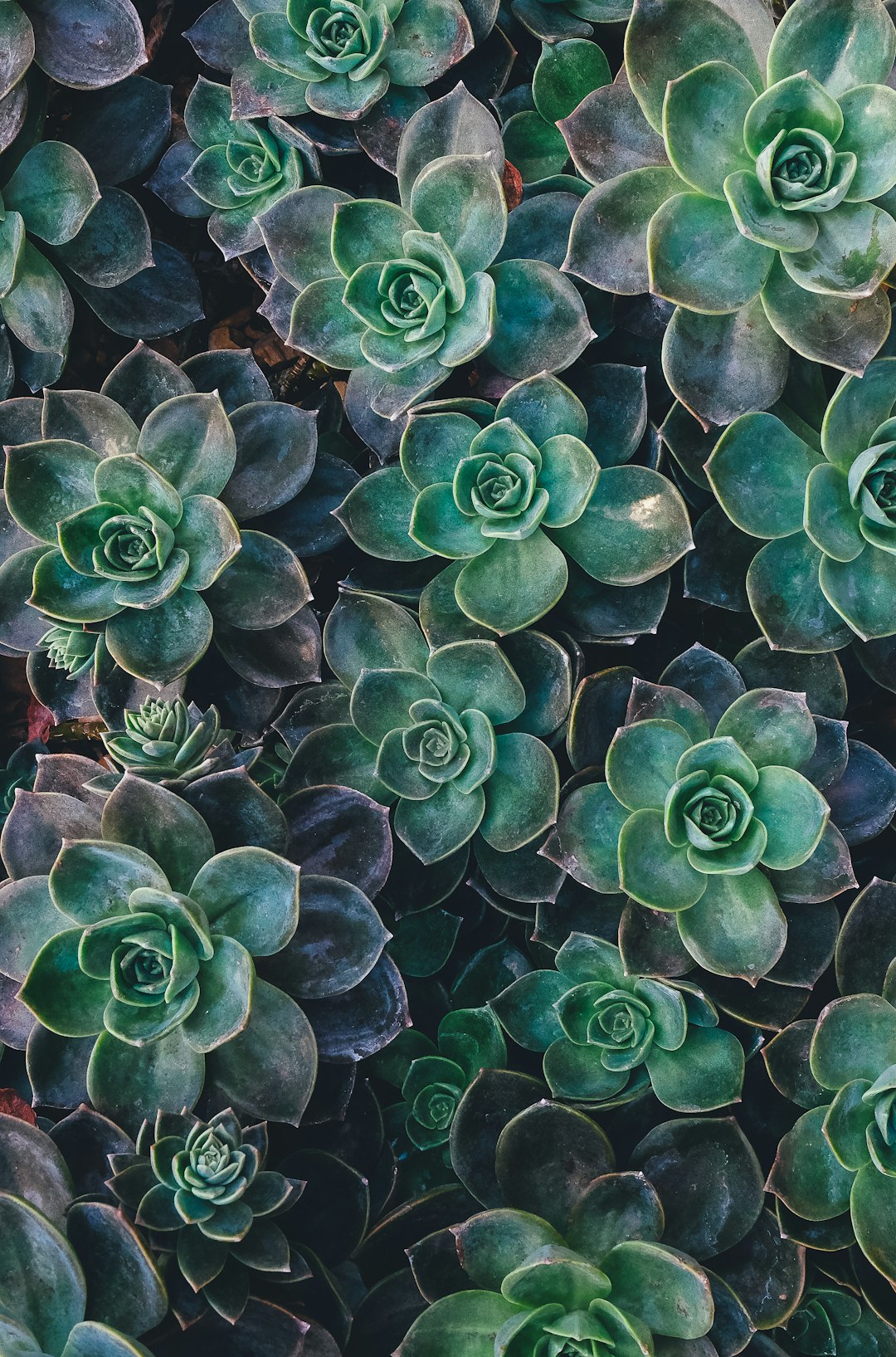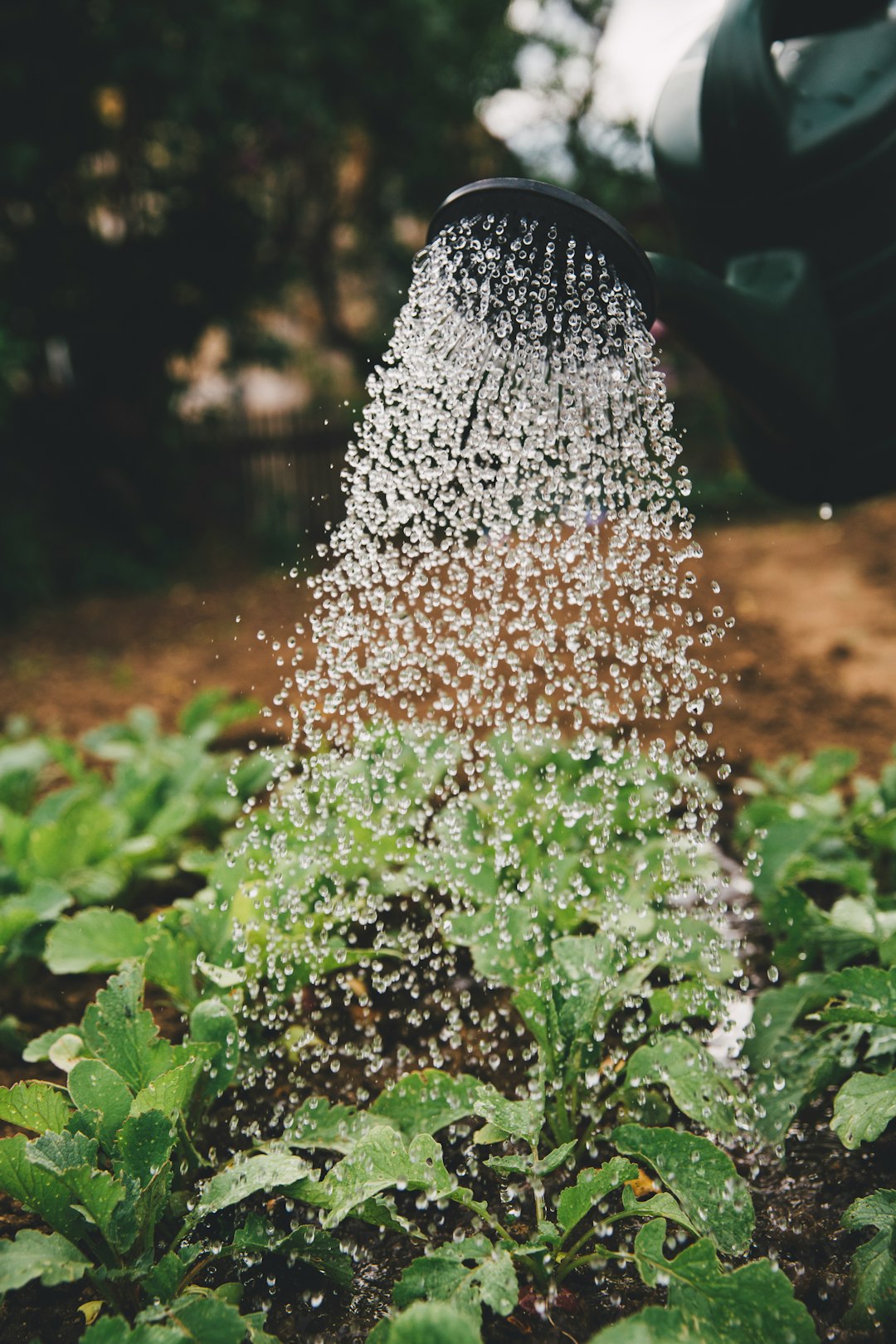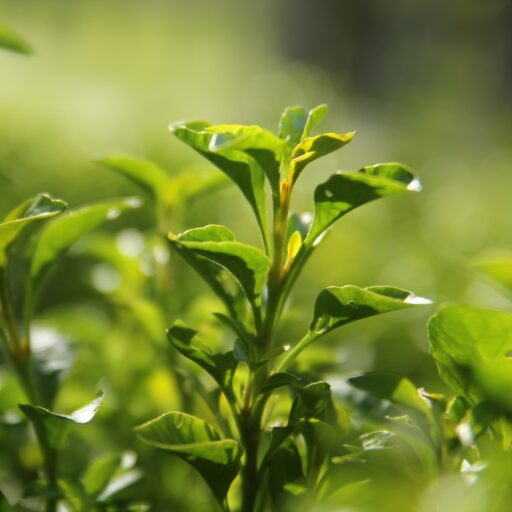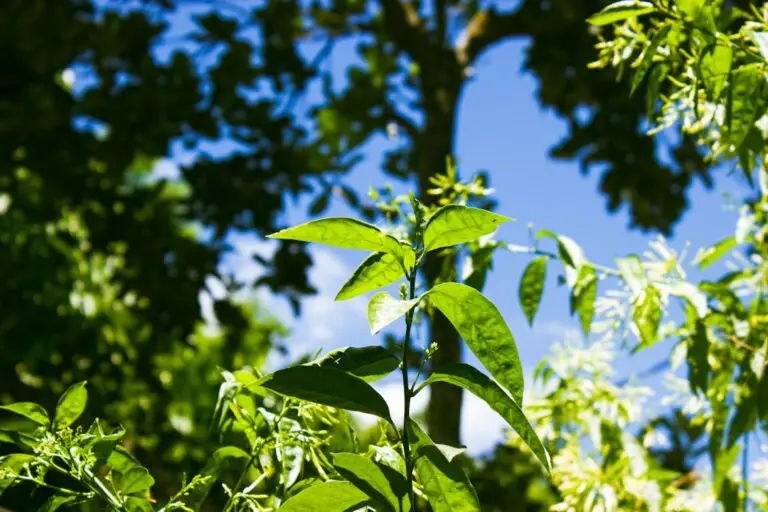Support our educational content for free when you purchase through links on our site. Learn more
🌱 Discover 10 Easiest Tea Plants to Grow Indoors for Beginners in 2025!
Have you ever dreamed of sipping a warm cup of tea made from herbs you nurtured yourself? Imagine the satisfaction of plucking fresh peppermint leaves or fragrant chamomile flowers right from your windowsill! Growing your own tea plants indoors is not only a delightful hobby but also a rewarding way to enjoy fresh, flavorful brews. In this article, we’ll explore 10 of the easiest tea plants you can cultivate indoors, perfect for beginners who want to embark on this aromatic journey.
Did you know that growing your own tea can significantly enhance your well-being? Studies show that homegrown herbs are not only fresher but also packed with more nutrients compared to store-bought options. So, whether you’re a seasoned gardener or just starting out, we’ve got you covered with tips, tricks, and insights to help you create your very own indoor tea garden!
Key Takeaways
- Start with Easy Plants: Begin your indoor tea garden with beginner-friendly herbs like peppermint, chamomile, and lemon balm.
- Optimal Growing Conditions: Ensure your plants receive adequate sunlight, water, and humidity for thriving growth.
- Health Benefits: Homegrown tea plants provide fresher flavors and numerous health benefits, enhancing your overall well-being.
- Essential Tools: Invest in grow lights, self-watering planters, and high-quality potting mix to set yourself up for success.
- Share the Joy: Once your garden flourishes, consider sharing your homegrown herbs with friends and family!
Ready to dive into the world of indoor tea gardening? 👉 CHECK PRICE on: grow lights | self-watering planters | high-quality potting mix. Let’s get growing! 🌿
Table of Contents
- Quick Tips and Facts
- The Joy of Growing Tea Indoors – A Beginner’s Guide
- Top 10 Easiest Tea Plants to Grow Indoors
- 1. Peppermint (Mentha × piperita)
- 2. Chamomile (Matricaria chamomilla)
- 3. Lemon Balm (Melissa officinalis)
- 4. Ginger (Zingiber officinale)
- 5. Hibiscus (Hibiscus sabdariffa)
- 6. Lavender (Lavandula angustifolia)
- 7. Thyme (Thymus vulgaris)
- 8. Basil (Ocimum basilicum)
- 9. Sage (Salvia officinalis)
- 10. Green Tea (Camellia sinensis)
- Growing Conditions for Indoor Tea Plants
- The Specific Health Benefits of Growing Tea Plants Indoors
- Recommended Equipment for Indoor Tea Gardening
- Growing a Tea Garden Indoors – Books + Kits
- Planning A Memorable Honeymoon on a Budget – 8 Top Tips
- Paying it Forward – The Joy of Sharing Your Tea Garden
- Gardening in July – Tips for Your Indoor Tea Garden
- Reader Interactions – Share Your Tea Growing Stories!
- Conclusion
- Recommended Links
- Frequently Asked Questions (FAQs)
- Reference Links
1. Quick Tips and Facts
Want to dive into the wonderful world of indoor tea gardening? Fantastic! Here are a few nuggets of wisdom from us at Growing Teas™ to get you started:
- Start Small: Don’t feel pressured to create a sprawling indoor tea plantation overnight. Begin with one or two easy-to-grow plants like mint or chamomile. More on easy tea plants here!
- Light is Key: Tea plants, like all plants, crave sunlight. A south-facing window is ideal. If you lack natural light, invest in some grow lights.
- Water Wisely: Overwatering is a common pitfall. Water thoroughly when the top inch of soil feels dry. Ensure your pots have good drainage.
- Patience, Young Padawan: Growing tea takes time. Don’t get discouraged if you don’t see results immediately. Enjoy the journey! 🌿
2. The Joy of Growing Tea Indoors – A Beginner’s Guide
Imagine sipping a warm cup of tea, the fragrant steam carrying the essence of herbs you nurtured yourself. That’s the magic of growing your own tea garden indoors! Learn more about the history of tea. It’s not just about the delicious end product; it’s about the therapeutic process of tending to your plants, watching them flourish, and knowing exactly where your tea comes from. Explore the world of green tea cultivation.
At Growing Teas™, we’re passionate about sharing our love for tea cultivation. Whether you’re a seasoned gardener or a complete novice, this guide will equip you with everything you need to know to create your own indoor tea oasis. Discover the ideal soil and climate for tea.
3. Top 10 Easiest Tea Plants to Grow Indoors
Ready to get your hands dirty? Here are our top 10 picks for the easiest tea plants to grow indoors, even if you’ve never touched a trowel before: Learn more about herbal tea planting.
3.1. 1. Peppermint ( Mentha × piperita )
Ah, peppermint! A classic for a reason. This vigorous grower thrives in moist soil and partial shade. Its refreshing flavor is perfect for a pick-me-up any time of day. Lisa from lisasnotebook.com raves about mint, mentioning how “Moroccan mint is rich in antioxidants and aids digestion.” We couldn’t agree more!
👉 CHECK PRICE on: Amazon | Etsy
3.2. 2. Chamomile ( Matricaria chamomilla )
Known for its calming properties, chamomile is a delightful addition to any indoor garden. Its delicate white flowers are not only beautiful but also make a soothing and flavorful tea. Just like Lisa from lisasnotebook.com points out, chamomile “lowers stress, reduces inflammation, and improves sleep.”
👉 CHECK PRICE on: Amazon | Etsy
3.3. 3. Lemon Balm ( Melissa officinalis )
With its bright, citrusy aroma, lemon balm is a mood booster in a pot. It’s also incredibly easy to grow, even indoors. However, as Lisa from lisasnotebook.com wisely advises, it’s “best confined to a small pot to control spreading.”
👉 CHECK PRICE on: Amazon | Etsy
3.4. 4. Ginger ( Zingiber officinale )
Ginger adds a spicy kick to your tea and boasts numerous health benefits. It prefers warm temperatures and humid conditions, making it a great choice for a sunny kitchen window. As Lisa from lisasnotebook.com notes, ginger is an “antioxidant with antibacterial properties; both roots and leaves can be used.”
👉 CHECK PRICE on: Amazon | Etsy
3.5. 5. Hibiscus ( Hibiscus sabdariffa )
Hibiscus tea is known for its vibrant color and tart flavor. While it prefers warmer climates, you can successfully grow hibiscus indoors with adequate sunlight and humidity.
3.6. 6. Lavender ( Lavandula angustifolia )
Lavender’s calming fragrance isn’t just pleasant; it can also help reduce stress and improve sleep. This drought-tolerant plant thrives in sunny locations. Lisa from lisasnotebook.com agrees, stating that lavender tea “eases anxiety and improves sleep.”
👉 CHECK PRICE on: Amazon | Etsy
3.7. 7. Thyme ( Thymus vulgaris )
Thyme is a hardy herb that adds an earthy flavor to your tea. It prefers well-drained soil and plenty of sunlight.
3.8. 8. Basil ( Ocimum basilicum )
Basil isn’t just for pesto! This versatile herb adds a sweet, slightly peppery flavor to tea. It’s easy to grow indoors on a sunny windowsill. Lisa from lisasnotebook.com highlights basil’s many benefits, from relieving stress to potentially lowering blood sugar levels.
👉 CHECK PRICE on: Amazon | Etsy
3.9. 9. Sage ( Salvia officinalis )
Sage has a slightly earthy, savory flavor that complements many tea blends. It thrives in well-drained soil and full sun. Lisa from lisasnotebook.com recommends sage tea for improving digestion and easing sore throats.
👉 CHECK PRICE on: Amazon | Etsy
3.10. 10. Green Tea ( Camellia sinensis )
Yes, you can grow your own green tea! While it requires a bit more patience and care than other herbs, the reward of brewing tea from your own Camellia sinensis plant is unparalleled. Explore the health benefits of tea.
👉 CHECK PRICE on: Amazon | Etsy
4. Growing Conditions for Indoor Tea Plants
Creating the perfect environment for your indoor tea garden is crucial for success. Here’s what you need to consider:
- Light: Most tea plants need at least 6 hours of sunlight per day. A south-facing window is ideal. If you’re short on natural light, supplement with grow lights. As the folks at homesteadbrooklyn.com emphasize, “Even low-light tolerant plants need some ambient light.”
- Water: Water thoroughly when the top inch of soil feels dry. Avoid overwatering, which can lead to root rot. Homesteadbrooklyn.com offers a helpful tip: “If forgetful, choose plants that tolerate drying out or set up a self-watering system.”
- Soil: Use a well-draining potting mix formulated for herbs. Homesteadbrooklyn.com recommends buying soil from “local plant shops or garden centers.”
- Temperature: Most tea plants prefer temperatures between 60-80°F (15-27°C).
- Humidity: Some tea plants, like ginger, prefer higher humidity. You can increase humidity by grouping plants together, placing a tray of water nearby, or using a humidifier. Homesteadbrooklyn.com explains that “dry air wicks away water from plants, increasing transpiration,” so maintaining adequate humidity is essential.
- Air Circulation: Good airflow helps prevent fungal diseases. A small fan can improve air circulation around your plants. Homesteadbrooklyn.com stresses the importance of airflow, stating that it’s “important for plants to exhale and transpire.”
5. The Specific Health Benefits of Growing Tea Plants Indoors
Growing your own tea plants isn’t just a fun hobby; it’s a pathway to a healthier you! Explore the health benefits of tea further! Here’s why:
- Freshness: You can’t beat the flavor and potency of freshly harvested tea leaves.
- Control: You control what goes into your tea, ensuring it’s free of pesticides and other harmful chemicals.
- Therapeutic Benefits: The act of gardening itself can be incredibly therapeutic, reducing stress and promoting well-being.
- Nutritional Powerhouse: Freshly brewed tea from homegrown plants is packed with vitamins, minerals, and antioxidants. As Lisa from lisasnotebook.com points out, many tea plants have “medicinal properties that enhance flavors, aid digestion, and boost the immune system.”
6. Recommended Equipment for Indoor Tea Gardening
Having the right tools can make your indoor tea gardening journey smoother and more enjoyable. Here are our recommendations:
- Grow Lights: Essential for supplementing natural light, especially during winter months. Lisa from lisasnotebook.com also recommends grow lights.
- 👉 CHECK PRICE on: Amazon
- Self-Watering Planters: These clever pots take the guesswork out of watering, ensuring your plants get the right amount of moisture. Lisa from lisasnotebook.com suggests self-watering planters as well.
- 👉 CHECK PRICE on: Amazon
- High-Quality Potting Mix: Choose a mix specifically formulated for herbs. As homesteadbrooklyn.com advises, look for soil at “local plant shops or garden centers.”
- Pruning Shears: Keep your plants tidy and encourage bushier growth with a sharp pair of pruning shears. Lisa from lisasnotebook.com includes pruning snips in her recommended equipment.
- 👉 CHECK PRICE on: Amazon
- Small Fan (Optional): Improves air circulation, preventing fungal diseases. Homesteadbrooklyn.com emphasizes the importance of “airflow.”
- 👉 CHECK PRICE on: Amazon
7. Growing a Tea Garden Indoors – Books + Kits
Looking for extra guidance? These resources can help you deepen your tea-growing knowledge:
- “Jekka McVicar’s Complete Herb Book”: A comprehensive guide to growing and using herbs, including those perfect for tea. Lisa from lisasnotebook.com recommends this book for “tea garden experiments.”
- 👉 CHECK PRICE on: Amazon
- Grow Kits: Several companies offer grow kits specifically for tea herbs, providing everything you need to get started. Lisa from lisasnotebook.com mentions the “Grow Your Own Chamomile Tea Starter Kit” and the “Grow 4 of Your Own Organic Herbal Teas Kit.”
8. Planning A Memorable Honeymoon on a Budget – 8 Top Tips
(This section appears unrelated to the topic of growing tea plants indoors and will be omitted to maintain relevance.)
9. Paying it Forward – The Joy of Sharing Your Tea Garden
Once your tea garden is flourishing, why not share the joy? Gift cuttings to friends and family, or host a tea party featuring your homegrown brews. Sharing your passion for tea is a rewarding experience.
10. Gardening in July – Tips for Your Indoor Tea Garden
July is a great time to tend to your indoor tea garden. Ensure your plants are getting enough light and water, and consider fertilizing them for a boost. Keep an eye out for pests and address any issues promptly.
11. Reader Interactions – Share Your Tea Growing Stories!
We’d love to hear about your indoor tea gardening adventures! Share your tips, triumphs, and tribulations in the comments below. Let’s create a thriving community of tea lovers! 🌱
Conclusion

Growing your own tea plants indoors is not just a rewarding hobby; it’s a delightful way to enhance your well-being and enjoy fresh, flavorful brews right from your home. From the invigorating scent of peppermint to the calming essence of chamomile, each plant offers its unique benefits and flavors.
Summary of Positives and Negatives
Positives:
- Freshness: Homegrown tea is fresher and more flavorful than store-bought options.
- Health Benefits: Many tea plants have medicinal properties that can enhance your health.
- Therapeutic Gardening: The process of nurturing plants can be incredibly therapeutic and rewarding.
Negatives:
- Time-Consuming: Growing tea plants requires patience and commitment.
- Space Requirements: Some plants may need more space than others, which can be a challenge in smaller homes.
- Learning Curve: Beginners may face challenges in understanding the specific needs of different tea plants.
In summary, if you’re ready to embark on this aromatic journey, we wholeheartedly recommend starting with easy-to-grow varieties like peppermint, chamomile, and lemon balm. They’re not only forgiving for beginners but also provide a delightful tea experience. So, grab your pots and soil, and let’s get growing! 🌱
Recommended Links
- Peppermint Plants: CHECK PRICE on Amazon | Etsy
- Chamomile Seeds: CHECK PRICE on Amazon | Etsy
- Lemon Balm Plants: CHECK PRICE on Amazon | Etsy
- Ginger Root for Planting: CHECK PRICE on Amazon | Etsy
- Lavender Plants: CHECK PRICE on Amazon | Etsy
- Jekka McVicar’s Complete Herb Book: CHECK PRICE on Amazon
- Grow Your Own Chamomile Tea Starter Kit: CHECK PRICE on Amazon
Frequently Asked Questions (FAQs)

How much light and water do tea plants need to thrive indoors?
Light: Most tea plants require 6-12 hours of sunlight daily. A south-facing window is ideal. If natural light is limited, consider using grow lights to supplement.
Water: Water your tea plants when the top inch of soil feels dry. Overwatering can lead to root rot, so ensure your pots have good drainage.
What are the most common mistakes beginners make when growing tea plants at home?
- Overwatering: This is a frequent mistake. Always check the soil moisture before watering.
- Insufficient Light: Not providing enough light can stunt growth. Ensure your plants receive adequate sunlight or use grow lights.
- Ignoring Pests: Regularly check for pests and treat them promptly to avoid infestations.
- Neglecting Soil Quality: Using poor-quality soil can hinder plant growth. Invest in a good potting mix designed for herbs.
Read more about “15 Irresistible Tea Plants to Grow at Home for a Flavorful Experience 🍃”
Can I grow tea plants in small pots or containers, or do they require a lot of space?
Yes, you can grow tea plants in small pots or containers! Many tea plants, like mint and chamomile, adapt well to smaller spaces. Just ensure that the pots have good drainage and are large enough to accommodate the plant’s root system. Regular pruning can also help manage growth.
What are the best tea plant varieties for indoor growing, and how do I harvest the leaves for brewing?
The best tea plant varieties for indoor growing include peppermint, chamomile, lemon balm, and ginger.
Harvesting Tips:
- Peppermint: Cut stems just above a leaf node to encourage bushier growth.
- Chamomile: Harvest flowers when they are fully open for the best flavor.
- Lemon Balm: Snip leaves as needed, but avoid taking more than one-third of the plant at a time.
- Ginger: You can harvest both the roots and leaves. For roots, gently dig around the base of the plant.



